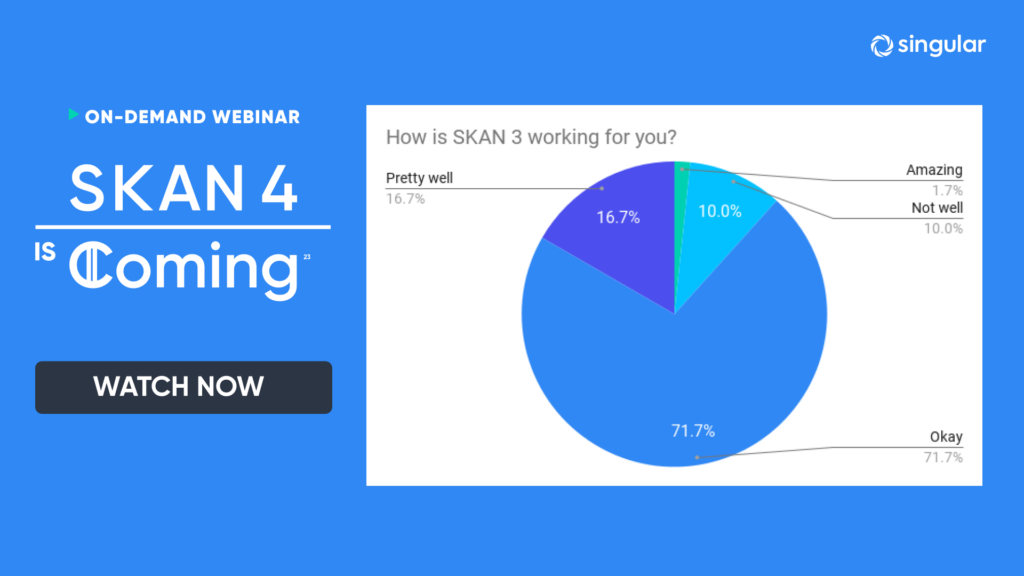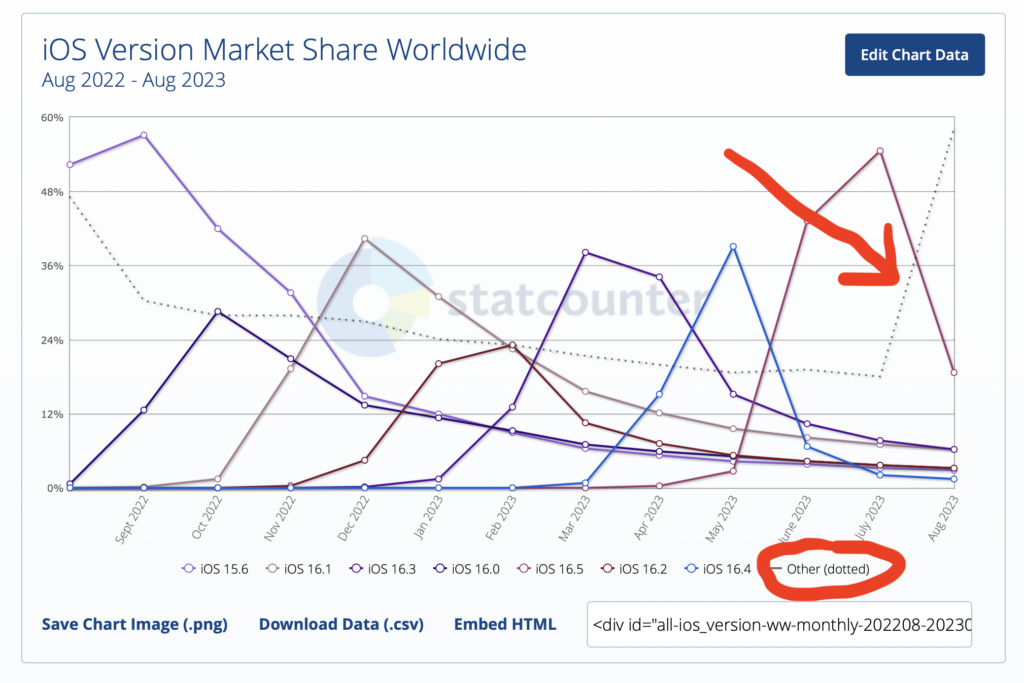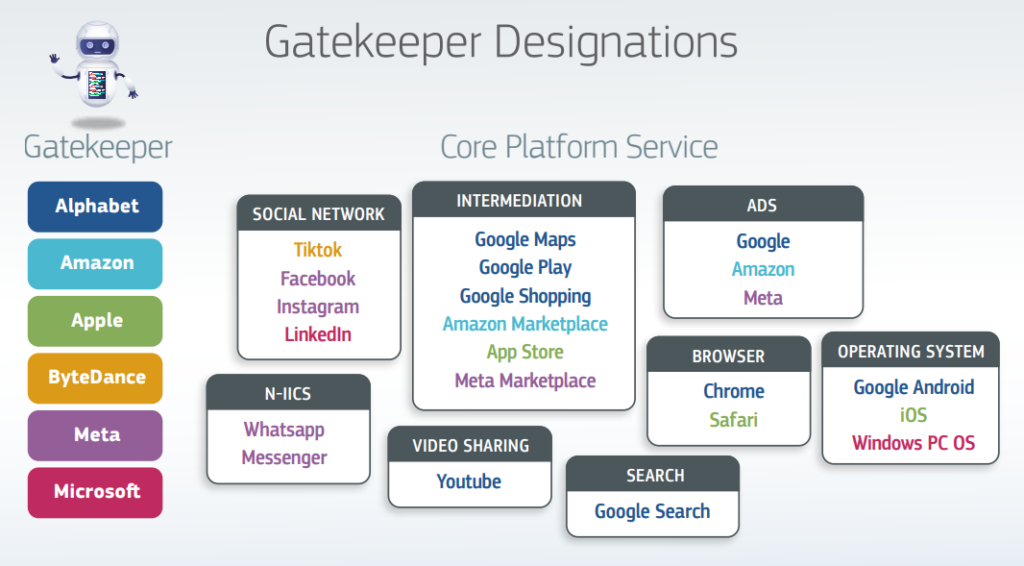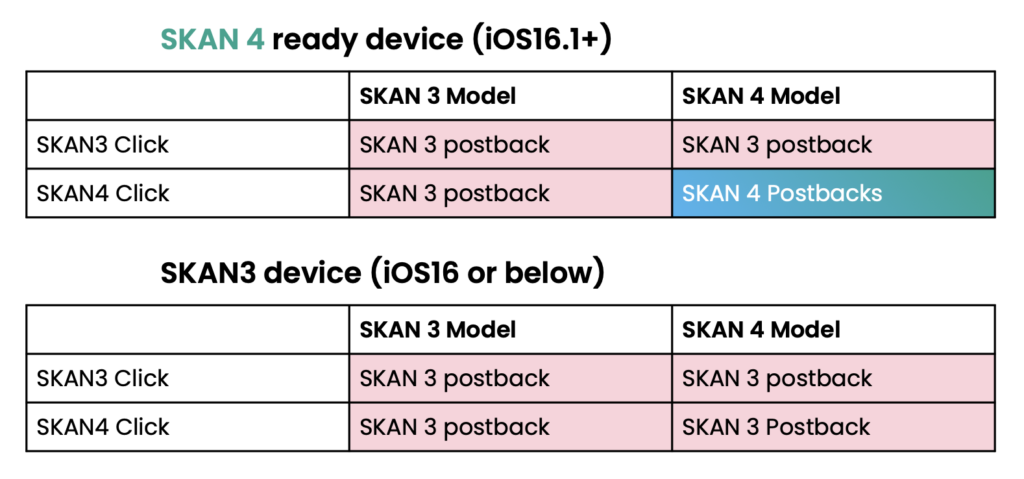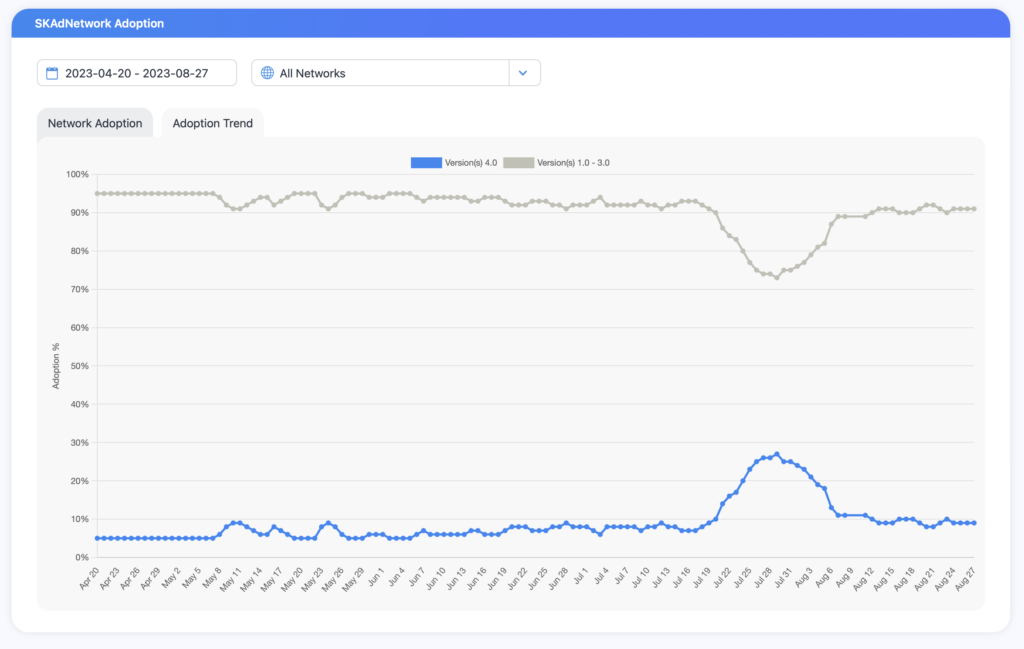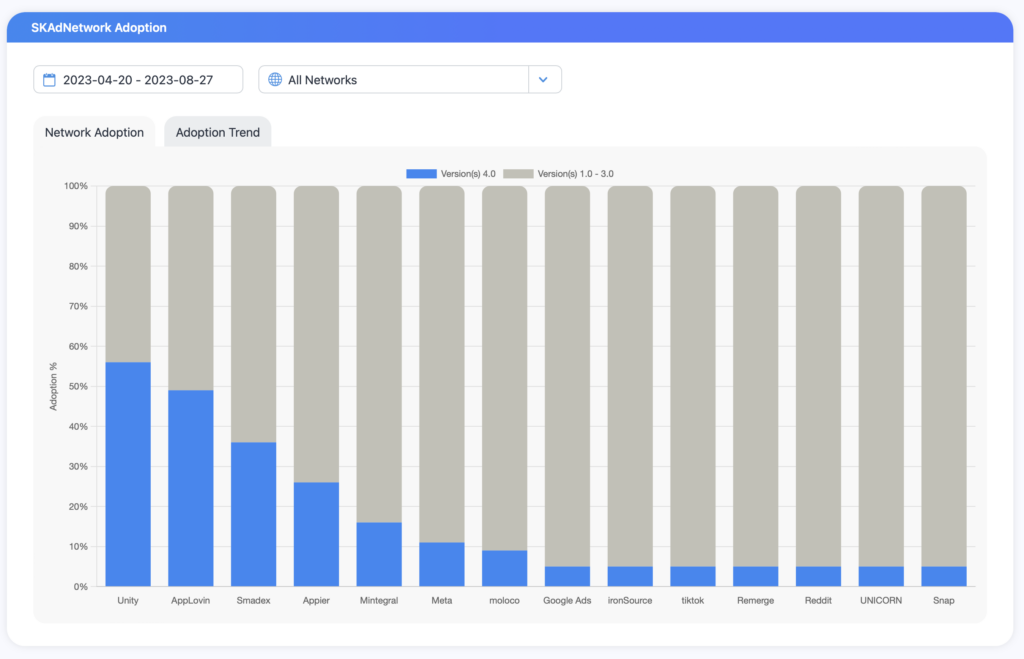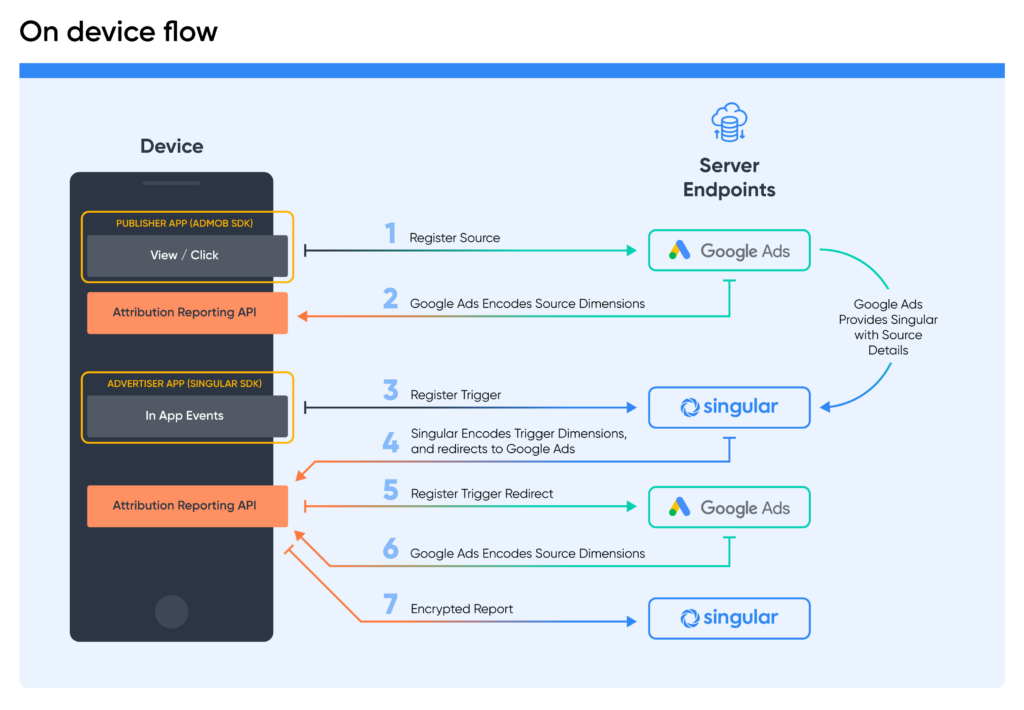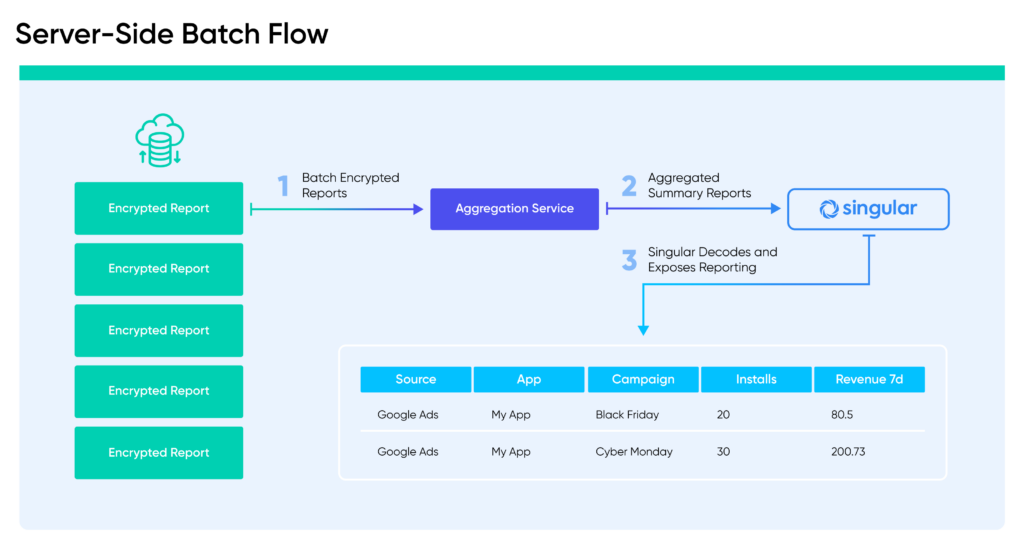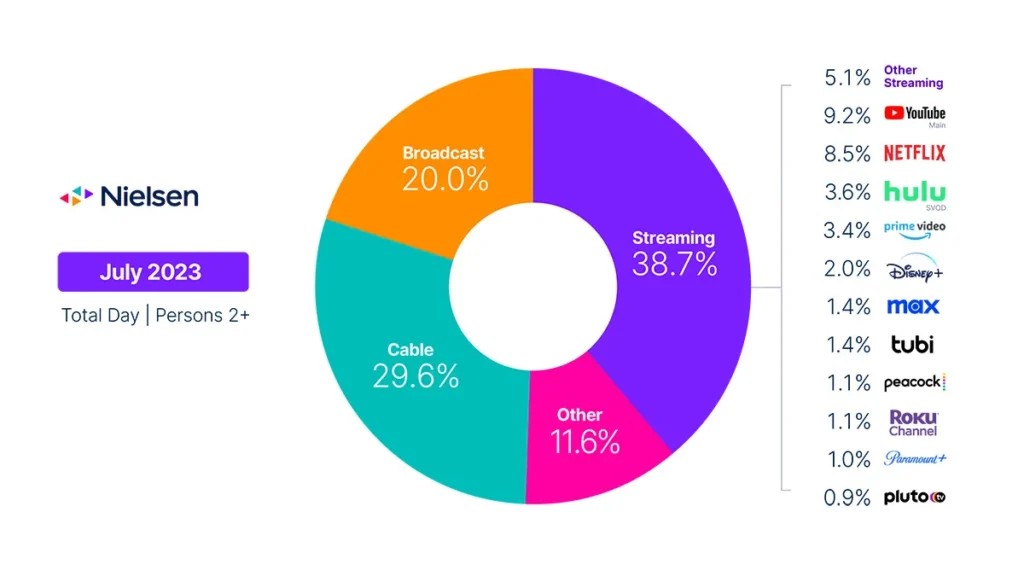What are the key Apple Search Ads hacks and tips to maximize your performance on one of the most important user acquisition platforms on the planet? There’s very few platforms that are close to essential for most mobile marketers: beyond Google and Meta that list might contain just a few other names. One of them is likely to be Apple Search Ads.
I spent some time on a recent Growth Masterminds podcast with ASO and ASA expert Emre Bilgic from MobileAction. He shared at least 10 Apple Search Ads hacks and tips; I’ll write about 7 here and let you watch or listen to the full episode for the rest (and all the details on the 7, too).
Press play on the video above, then keep scrolling …
Subscribe to Growth Masterminds
I’m sharing some of the highlights and Apple Search Ads hacks and tips below, but subscribe to the Growth Masterminds podcast to never miss out on insight.
Start here: subscribe to our YouTube channel.
Then, pick your favorite podcasting platform and put us on your phone:
- Apple Podcasts
- Spotify
- Google Podcasts
- And pretty much any other major platform you prefer …
1. Use creative that no-one else can to boost conversion rates and reduce competition
Sure, you can bid on your app’s name. Or what it does. Or key descriptors. And you can use creative that is generic, or something from your app’s main screen, or your logo. But what if you have a mascot, or a character in your game who has come to symbolize everything about it, like the Barbarian King in Clash of Clans?
Use it!
You’ll boost your conversion rates significantly.
Even more importantly, you’ll get good conversion rates for fairly broad generic search terms, which means you can avoid the crush of competition for the obvious search terms and reduce your costs.
“Where you’re focusing on the character specifically or you’re focusing on the specific term or the search phrase, you do see that people are actually going ahead and converting over significantly better,” Bilgic says. “And what I mean by significantly better is basically brand campaign performance level is better … for very super generic terms, actually, when you would think about it. So stuff like, for example, if you’re saying for Clash of Clans, if you’re saying ‘barbarian raid,’ most likely they’ll be getting a tap-through rate and a conversion rate pretty similar to what they’re getting on Clash of Clans.”
That saves you from bidding on the same keywords as thousands of other app marketers. And saves you money.
2. Fight your competitors … with humor
Pair custom product pages with competitive messaging and humor for the win. Most marketers can’t aim their default App Store or Google Play listing at just one specific competitor. That would be weird for people checking out your app, especially if they don’t know that competitor, and counterproductive: you’re literally introducing them to your competition.
Instead, save competitor-specific language for custom product pages paired with conquest ads. And add some humor for better impact.
“Opera is … actually bidding on the keywords for Mozilla Firefox and variations of it,” Bilgic says. “And the initial image basically says, ‘Fire The Fox’ when somebody searches for Mozilla Firefox, and they come up on top. Brilliant, right?
“Another one that I really like is what NordVPN is doing and they’re targeting Norton, specifically Norton Security, because they do also have a VPN suite in their app. And the image is basically some like a small little text bar and it says N-O-R-T and just like triple dots, and says like, ‘Oops, it seems you were spelling NordVPN wrong.’”
Creativity, humor, conquesting, and specific app listings targeting specific key competitors: genius.
3. Don’t over-optimize for lower funnel conversions
I feel awful for sharing this one because I’ve been one of the disciples of the lower funnel conversion cult: optimizing everything for ROAS, conversions, ROI, engagements, and so one.
But sometimes that’s counterproductive.
A healthy upper funnel is critical to generate a healthy lower funnel. Every B2B marketer knows this, but sometimes we forget it in the B2C consumer space with mobile user acquisition. The problem with over-optimization for lower funnel is essentially that you don’t see enough upper funnel to fully evaluate a campaign.
“If you look at a keyword that has a potential of generating 10,000 impressions per day, and let’s say you’re trying to make a judgment when you’re generating about 200 of that 10,000 in a day … the assumption is, when it comes to statistics and stuff, whatever the ratios are, roughly they might be maintained, right?” Bilgic says. “And that might be true in some cases, but very more often than not, those three, five percent changes that you would see would basically make that particular keyword either work for you or not work for you.”
Make your upper funnel healthy. Then you’ll have scale to properly evaluate your lower funnel.
4. Realize you have 2 days to win
Let’s say you have cash to burn. You hit some high-volume keywords and your impressions go through the roof. But then, 2 days later, they crater.
What’s happening?
Lower funnel still matters, and optimizing for it is critical, and Apple Search Ads thinks you failed, so it’s not showing your ad anymore.
From Bilgic, about photo and video app client:
“One of the keywords happened to get traffic from Google Photos specifically … and Google specifically as well … actually they were able to get around 200,000 impressions in two days. But the thing is, because the tap-through rate and conversion rate for that particular term was super low, the algorithm basically gives you a chance—usually that’s what I see—for two days, if it’s a high impression generating keyword. And if you’re not able to come to the particular standard of that keyword or the averages for that keyword, you just plummet to death, basically, in terms of number of impressions.”
Shoot for the moon, but prepare your lunar base too. High numbers of impressions are cool, but if they’re not accompanied by some action on the back end, Apple Search Ads will turn down the volume.
Solution?
If Apple Search Ads is not showing your ad as often, pause your campaigns for a while. Re-jig, then restart. Now you’ve got a chance to hit the algorithm jackpot again, hopefully with a higher conversion rate.
5. Make your competitors cry (and give up)
There are ways, Bilgic says, to make people give up, stop bidding on your keywords, and cry. (OK, he didn’t add the crying part.)
The key is in Apple Search Ads’ second-bid logic and knowing your cost-per-tap (CPT).
“You know what your average CPT is, right?” Bilgic says. “So, you know technically on average what the second bid plus, well, minus one cent is. And then once you increase it a little bit, you would see how much more traffic you would be able to get or what your cost might be going to. So then you would understand who’s paying what for it roughly. And if you’re using any kind of intelligence tool, like what we have over at MobileAction, you can actually see exactly who’s doing what in terms of who’s targeting the keywords. So then basically you tend to make your bid just very slightly lower than your average CPT bid. I can assure you, people give up eventually.”
Of course, Apple laughs all the way to the bank.
But … if you’re either better-funded or you can monetize better than your competitors, you can win.
6. Use cheap Search Tab campaigns
Most user acquisition managers overlook search tab campaigns on Apple Search Ads, Bilgic says, probably because tap-through rates are low. That’s a mistake.
“You can get a significant amount of impressions through the Search Tab on a monthly basis with bidding like 20 cents, maybe 15 cents,” he says. “And I’m talking about 100,000, 200,000 impressions per month, so the average CPM drops down ridiculously low. Like, much lower than any other channel that you would normally get.”
That means average CPMs below 80 cents, even in the United States: typically the most expensive market.
No other channel can do that, Bilgic says, so even though tap-through rates are low and the conversion rates are not super-high, overall results are still good.
“You can spend a couple hundred bucks, maybe a thousand per month, and still generate a decent number of downloads through Apple Search Ads,” he adds.
7. Don’t ignore Today tab campaigns
The Today tab is easy to ignore. App ads there are tiny — you can’t have screenshots of your app anymore — and what’s more, they’re sandwiched between 2 large images with Apple’s content.
The result is seemingly super-depressing: a 90% decrease in tap-through rates.
But that’s actually good news compared to how Today tab campaigns used to work:
“One of the main bottlenecks when it came to Today Tab was due to the tap-through rate being high, budgets would be depleted in a few hours,” Bilgic says. “And I’m talking about thousands of dollars of daily budgets … would be depleted in hours.”
That’s a nightmare scenario for the unwary UA manager.
But even though the new Today tab screenshot-less campaigns have a 90% decrease in taps, conversion rates are way up, possibly because a single tap initiates a download. (I literally almost downloaded a premium weather app by accident when researching this personally.)
“Conversion rates increased by 100% after that change,” Bilgic says.
But impressions stayed high. And that means that not only are you paying less (fewer taps, which is what you pay for), you’re actually getting more: higher conversion rates. And as an added bonus, you’re getting a huge number of impressions, which has to ultimately be good for your app and your brand at some level.
“In fact, if you had a pretty large budget, your impressions—and I’ve seen this with my own eyes—overnight increased by about 500%,” Bilgic says. “And I’m talking about apps here that were generating, I would say, a couple million per day in terms of impressions. So, from a couple million to let’s say, one or two, to like 10 million in an overnight is a ridiculous amount of increase, right?”
So the end result is a win for advertisers:
- More impressions
- Fewer taps
- Lower cost
- Higher conversion rate of taps to installs
Much more in the full show: more Apple Search Ads hacks and tips
Here’s a lightly edited transcript of our conversation …
Emre Bilgic: It’s usually that people will go ahead and bid on keywords that they think are relevant and test them out, and basically end up bidding on the exact same keywords that a thousand other apps are bidding on, and then they cannot expand.
John Koetsier: How can you maximize one of the top three user acquisition platforms on the planet? Hello and welcome to Growth Masterminds. My name is John Koetsier. On iOS, Apple Search Ads is a top three user acquisition source. It’s alongside Facebook and Google. Sounds amazing. It is amazing. It’s pretty critical, really. That means it’s important to maximize your performance there, as well as on any other ad network you’re on. How do you do that?
Well, that’s what we’re going to find out. To chat, we have Emre Bilgic from Mobile Action. Welcome! How are you doing?
Emre Bilgic: Yeah, doing good, John. Great to be here. Thank you for having me.
John Koetsier: I’m super pumped to have you. I think that I’ve had you before, certainly on a Singular webinar…
Emre Bilgic: Yes.
John Koetsier: …but I think on Growth Masterminds. Am I right?
Emre Bilgic: I don’t think so. I think it’s always on Singular, like, quite a few times on Singular, actually.
John Koetsier: Okay. Clearly I’m doing way too many of these. I lost track, totally lost my marbles. It’s all good. ASA—I’m pumped to talk about it because, like I said, it’s massive, it’s huge, it’s a big deal. You have to do well at it if you’re going to do well at user acquisition. Tell me something about Apple Search Ads that not many people know.
Emre Bilgic: Right. And one of the things, coming here, what I definitely wanted to talk about is just combining things all together, in terms of paid marketing efforts. Being in a privileged state of seeing a lot of data at my disposal across multiple large apps that are doing really, really well in their categories, it gives me a pretty unique opportunity to check and see what’s working, what’s not working, what people are trying, what people have tried and failed, and what people tried and actually did work really well and people really don’t know about them.
One of the main things that I was able to see—and this is a very classical marketing tactic I would say—is that across the different ad placements that you have in traditional marketing, like in a TV ad or a billboard, there’s a catchphrase; there’s a specific, feeling or a specific term that you’re trying to associate your brand to, right? Sometimes it’s done with wording. Sometimes it’s done with a mascot. And we actually see both are being utilized when it comes to Apple Search Ads and just creatives in general. For example, we have great characters that emerged from mobile gaming as well. One of the great things is, you know, the barbarian from Clash of Clans, the king in Royal Match, right? All of those are synonymous with the particular app itself.
So the neat thing is, when you see creatives for these parts of games or apps, they utilize those characters or those catchphrases, right? Whatever they might be. And the thing that I was able to notice is that as long as you are able to manage a pretty strong presence in your creative ads and your other marketing efforts, where you’re focusing on the character specifically or you’re focusing on the specific term or the search phrase, you do see that people are actually going ahead and converting over significantly better.
And what I mean by significantly better is basically brand campaign performance level is better…for very super generic terms, actually, when you would think about it. So stuff like, for example, if you’re saying for Clash of Clans, if you’re saying barbarian raid, most likely they’ll be getting a tap-through rate and a conversion rate pretty similar to what they’re getting on Clash of Clans, right? And I’m seeing this across the board.
That’s something that people really don’t know that is happening and doesn’t really come very commonly. It’s usually that people will go ahead and bid on keywords that they think are relevant and test them out, and basically end up bidding on the exact same keywords that a thousand other apps are bidding on, and then they cannot expand, right? So yeah, this is one of the things that not many people know and do.
John Koetsier: That’s kind of genius in a sense because, like you said, nobody else can bid on that. They can’t bid that keyword up, right? I mean, they can’t…it doesn’t make any sense. The downside, I guess, is you have to be like a cultural icon to do it.
It was funny as you’re talking about it. I don’t know if you’ve seen the movie Free Guy with Ryan Reynolds on Amazon Prime? If you haven’t seen it, go see it. It’s funny. It’s on Amazon Prime. Everybody has Amazon Prime…maybe? Maybe that’s a big statement. But Free Guy, at one point, he’s a cartoon action character and his script hasn’t fully been written out, and he says, “Catchphrase” where it was supposed to be inserted later.
Emre Bilgic: Yeah, yeah.
John Koetsier: Okay, cool. So that’s an interesting one. Anything else that you’ve seen on ASA that, hmm, not too many people know about this?
Emre Bilgic: Right. One of the things, again, I mean, it’s getting more and more common now, but when I first pointed it out quite a few months ago—I think I talked about it when I was doing my speech at APS London a couple of months back—was Custom Product Page utilization, specifically for competitor campaigns.
One of the things that people really talked about when Custom Product Pages initially came out was that they were saying, Oh, okay, you can highlight the different features that you have in your app, and pretty much that’s it…and maybe test out a couple of different creative variants. But they’re really good examples that people are utilizing for competitor campaigns as well. One of the ones that I really like, and I’ve shared that multiple times, is what Opera is doing. So they’re actually bidding on the keywords for Mozilla Firefox and variations of it. And the initial image, like the initial image, basically says, ‘Fire The Fox’ when somebody searches for Mozilla Firefox, and they come up on top. Brilliant, right?
So, another one that I really like is what NordVPN is doing and they’re targeting Norton, specifically Norton Security, because they do also have a VPN suite in their app. And the image is basically some like a small little text bar and it says N-O-R-T and just like triple dots, and says like, ‘Oops, it seems you were spelling NordVPN wrong.’ That’s the initial image that they have. Brilliant, brilliant ideas. That’s basically allowing you to capitalize on the brand awareness and the search volume that your competitor is getting. And since, due to the placements nature, you’re always going to be on top.
For example, when you do like Google Ads and stuff, you count like three different variants and it’s like a little scroller down below. It’s not really that popping out when it comes to the Play Store, but in the App Store specifically, it’s the first thing that people see when they do a search.
So somebody puts in Norton or something like that and they see this ad. That’s hilarious. Yeah, I was actually looking for a VPN, why not NordVPN? It’s a perfect point to catch the user just before they were making that particular download, you’re just converting them over. It’s a great, great strategy.
John Koetsier: What I love about what you just said is, the first tip you gave was you’ve got to kind of have some scale and some cultural cachet in order to run an ad that has a catchphrase or a character from your game or from your app, so you’ve got to have a certain size. This one, it’s for a challenger brand. It’s for somebody who’s coming in with an app that’s positioned themselves against the big guys. And you can leverage that position to your benefit and, like any kind of advertising, a little bit of creativity and a little bit of humor adds so much.
Emre Bilgic: Exactly. Exactly. So, yeah, there’s a lot of things, but those are like two of the big things that I would love to share.
John Koetsier: Wonderful. Wonderful. Okay. Let’s talk about metrics. Most marketers understand what key metrics they’re looking at. Everybody has a little bit, something different, you know, whether you’re subscription, whether you’re retail, whether you’re hyper casual, whether you’re mid core or hardcore game, all that stuff. If you’re focusing on ASA, is there anything out of the ordinary, anything that you should pay attention to metric-wise that really indicates the health, or perhaps lack thereof, of your campaigns?
Emre Bilgic: Yeah, definitely. So one of the common pitfalls that I see people going into is that they try to optimize for lower funnel events too early on in their process, without really maintaining a proper healthy upper funnel. They’re really not able to generate a healthy lower funnel and it becomes like a certain situation, because the logic—although this is being contested very recently—the logic in Apple Search is the second price bit, right? So what you pay is basically one cent higher than the second bidder. That’s still valid, just so you know, there might be isolated cases where it may not be seeming that way. But for the most part, that is pretty much applicable.
And what people basically do is that they have a slightly decent impression volume with some of the keywords that they get with the particular bid level that they’re at, but that is far away from the potential impression share that they could get from that keyword. At that level, they make the judgment straight away saying, like, Oh, this is expensive or this is cheap. And they can be really disappointed if it turns out to be cheap and then becomes ridiculously expensive, or the other way around. And that’s something that I commonly see.
When I talk to clients and our partners, one of the things that I always ask is, What do you want to achieve with Apple Search Ads? What do you want to do? And everyone has the same answer, pretty much saying, I want to scale and I want to stay profitable. I’m like, Yes, that applies for every single particular paid channel that you could ever do, right? Like it’s normal.
You need to really understand what you do. What I love to do is create a healthy upper funnel initially. Try to put a price and a particular install-cost range or a tab-cost range that I’m going to be okay with, according to what I’m seeing on the conversion side, of course. Then after I achieve that particular benchmark, then I start to look at lower funnel events and total amount of lower funnel events that I was able to generate.
Because the thing is, if you look at a keyword that has a potential of generating 10,000 impressions per day, and let’s say you’re trying to make a judgment when you’re generating about 200 of that 10,000 in a day … the assumption is, when it comes to statistics and stuff, whatever the ratios are, roughly they might be maintained, right? And that might be true in some cases, but very more often than not, those three, five percent changes that you would see would basically make that particular keyword either work for you or not work for you. So, yeah, definitely, it’s a very common thing across the board, but people go into lower funnel optimization with Apple Search Ads too early on is what I see very commonly.
John Koetsier: That is super interesting, and I know we were going to talk about it later, but I’ve got to bring it up now. This is a perfect segue, because there’s another reason to increase your impression volume on Apple Search Ads, right? Because it’s not just a paid platform, obviously. It’s literally the App Store and it’s literally where you can get organics. And organics are influenced by a lot of different things, including your overall brand footprint. And having more impressions, whether on search or other places in the App Store, increases your brand footprint.
Whether it results in something immediate or not, that’s another question, and valuing it is another question—but theoretically, a bigger brand footprint means that you’re going to get more consideration on Apple Search…on the App Store, and therefore more organics too. Is that accurate?
Emre Bilgic: Yeah, that’s pretty much accurate. The only thing that I would say a little bit differently there is not necessarily due to the volume of impressions that you’re able to generate, but there should be something supporting that high volume of impressions coming in.
A great example that I was able to see is, I was working with a, I would say like a midsize photo and video app, and one of the keywords happened that was in broad match happened to get traffic from Google Photos specifically … and Google specifically as well. Two terms that are searched to oblivion in the App Store—hundreds of thousands of impressions per day—and with their bid amount, actually they were able to get around 200,000 impressions in two days.
But the thing is, because the tap-through rate and conversion rate for that particular term was super low, the algorithm basically gives you a chance—usually that’s what I see—for two days, if it’s a high impression generating keyword. And if you’re not able to come to the particular standard of that keyword or the averages for that keyword, you just plummet to death, basically, in terms of number of impressions.
And that’s actually also applicable for the ASO side of things. When it comes to the App Store, I do tend to talk about this a lot. There’s three main things that affect your organic rankings for a certain keyword. If somebody’s searching for that keyword and then you get that impression, right? Basically what would be happening is that that person is either going to look into the product page specifically, or download then and there. If they go into it, then there’s an option if they’re going to download or not. If you are successful at every single step on that way and that volume increases day over day, your ranking associated to it increases as well. It’s not historic information only. It’s kind of like a daily, weekly, monthly basis that you need to sustain that growth continuously going on.
So that’s, for example, why you would see sudden jumps, like you would see those posts on LinkedIn, ‘Our app is number one in the store,’ but it was just for that day and never again. See, right? Most likely it’s because that velocity is just ridiculously increased and beating everyone in the market that logically for the algorithm is putting that on the top position, right? Not only due to impressions, but the total amount of taps and installs that they’re generating is generating that interest supposedly.
I mean, there’s a lot of different ways to achieve that, that might not be okay to do something—you could get banned really badly if you use those methods—but, basically it’s just a combination of all of those things.
What the algorithm is trying to estimate is that, is this particular keyword suitable for your app, and does it deliver proper user experience for the person looking for it? Because there should be a reason for someone to go into the App Store. And it’s pretty much, you know, when you think about it, you need to get relevant results out.
That’s why Google dominated as a search engine before. I used Ask Jeeves back in the day, and Google was giving significantly better results. I eventually transitioned over. This is like ages ago at this point. So, basically there’s a reason why Google was the search engine eventually, and Bing didn’t hang on, and Ask Jeeves wasn’t a thing anymore. Yahoo didn’t work out, right? There was Yandex from Russia at the time that was really popular there. But there’s reasons, like it’s trying to provide the most relevant experience to the user, and that’s what it values as well.
And what is the indicator to understand if the user experience is good? Is that, did they see your app when they searched for the term? Did they click on your app when they searched for that term? And did they install it? There’s other metrics associated to it, but those are the three main things that the algorithm looks at and that benefits your overall organic ranking, and you should be able to sustain them. So, yeah.
John Koetsier: It makes sense. It makes a ton of sense. Apple wants a good experience. Absolutely. And they don’t want to be showing ads that don’t convert. That also makes good sense. It almost makes me think, Hey, if your campaign’s not working … cancel it, delete it, try again after a week or something like that.
Emre Bilgic: Yeah, exactly. Probably like if Apple Search is not working for you, it’s either one of two things that was happening. Either your keyword pool is ridiculously competitive that you’re bidding on terms like, let’s say you’re just a new social casino app in a very super competitive market, and then you have an Apple Search Ads campaign that is doing ‘casino, slots, roulettes,’ you know, ‘spades’ and stuff like that, and those kinds of ‘craps’ and stuff, those are the only keywords that you’re bidding on. You’re like, I’m bidding like two and a half dollars here. Why am I not getting any impressions? Well, yes, because somebody else is probably bidding like $55 for that keyword. You’re far off in terms of the impression share that you cannot be at that competitive level, right?
There’s ways to make it work. Long tails are really great to mutualize, especially if you’re not in that kind of strong state of basically going into it and getting that kind of volume from those high competitive keywords. You know, long tails can work really well. And also, basically just going after competitors and targeting them accordingly, seeing and understanding if they are not basically in that kind of situation, that they would go ahead and defend their keyword. Sometimes that is a very common thing that you would see. It’s pretty much free at that point…
John Koetsier: Brands love that.
Emre Bilgic: Exactly.
John Koetsier: Having to spend money to just own what they own.
Emre Bilgic: Yeah, yeah, exactly. I mean, there’s ways to make people get fed up and not bid on your keyword at all. So, yeah.
John Koetsier: Ohhh, sounds like there’s a story there. How do you make people get fed up and not…
Emre Bilgic: Well, I mean, it boils down to the second bid logic. You know what your average CPT is, right? So, you know technically on average what the second bid plus, well, minus one cent is. And then once you increase it a little bit, you would see how much more traffic you would be able to get or what your cost might be going to. So then you would understand who’s paying what for it roughly.
And if you’re using any kind of intelligence tool, like what we have over at MobileAction, you can actually see exactly who’s doing what in terms of who’s targeting the keywords. So then basically you tend to make your bid just very slightly lower than your average CPT bid. I can assure you, people give up eventually.
John Koetsier: You just make it too expensive and then somebody else gets a Series A or a Series B and they try again and…
Emre Bilgic: Exactly, exactly. I’ve seen that happen so many times. So many times.
John Koetsier: Oh man. Ouch.
Emre Bilgic: I was able to beat them, so … I’m fine on my end. I mean, I’m pretty sure that there’s some poor UA manager over at the other side trying to explain why they overspent their budget by like 50%.
John Koetsier: Yes, yes, yes. Meanwhile, Apple is laughing all the way to the bank because everybody’s fighting these wars that benefit them. Wow.
Emre Bilgic: Yeah.
John Koetsier: Do you have to spend big? I was wondering if you are a startup—I’m doing a series right now, this is not really part of it but I’m doing a series on Growth Masterminds, your first million users, right? So you’ve got people who are building apps. Some of them are, you know, two developers in a garage. Some of them are a very professional team that exited from somewhere else, and they have different paths. But if you are a startup, you’re typically resource-constrained and do you have to spend big on ASA? Or can you do some drip campaigns smartly on some long tail items?
Emre Bilgic: So, it’s pretty much a little bit harder, because the thing when it comes to Apple Search Ads is because the conversion rates are really high and you pay on the tap level, right, compared to any other channel you would see significantly higher tap-through rates and significantly higher conversion rates. That usually results in a higher cost per install as well, compared to any other channel that you would see. But there’s methods that you could use and different ad placements that you could utilize to ensure that you’re not really paying all that much per tap. And then the total number of conversions and the cost per install becomes quite very low as well.
One of the things I really like to do is apply actually Search Tab campaigns. Search Tab campaigns are usually very much overlooked by everyone. And the total amount of bids that you would see in Search Tab—especially outside of the U.S., like U.S. is a little bit higher, but especially outside of the U.S., any other country—you can get significant amount of impressions through the Search Tab on a monthly basis with bidding like 20 cents, maybe 15 cents per tab. And when I’m talking about 100,000, 200,000 impressions per month, so the average CPM drops down ridiculously low. Like, much lower than any other channel that you would normally get.
I basically have seen—even in the U.S.—average CPMs for the Search Tab a little bit below 80 cents at certain times as well. No other channel can achieve 70, 75—well, I kind of gave the number now—70, 75 cents of a CPM in the U.S. No one can do that, right? So yes, tap-through rates are low. Yes, the conversion rates might not be really high, but I can assure you it’s going to be pretty much on par with an averagely performing campaign as well.
And that’s what I would suggest to do. You can spend a couple hundred bucks, maybe a thousand per month, and still generate a decent number of downloads through Apple Search Ads. If you go into keywords, the neat thing is you get to target the search intent, but that comes at a premium definitely compared to any other channel. Like, it’s just basically a numbers game. I would say, if you’re seeing…I’m talking about the U.S., and everywhere else in the world is cheaper, but in the U.S., if you’re seeing $2 or higher CPIs in the other network that you’re doing? Yes, go ahead and test out with long tail keywords and specific terms. But if it’s basically below that? Highly unlikely you’re going to be able to reach that number in Apple Search as well—unless you do Search Tab. Search Tab, you will be able to do that.
John Koetsier: We talked about it a little earlier; we touched on it—the correlation between App Store Optimization and Apple Search Ads. And of course, ASO is a blanket term; it applies to Google Play as well and other app stores, frankly, but you know, since the App Store was first, that’s how we got the name App Store Optimization.
Emre Bilgic: Yeah.
John Koetsier: What’s the correlation between ASO and paid ads on Apple Search Ads? If you have better ASO, are you going to perform better? Is that just a natural function of having basically a better landing page which is your app listing? Is there anything else going on there?
Emre Bilgic: Right. So, there’s two things: this ASO and ASA does affect each other, but it’s kind of like both sides affect each other in different ways. Like, if you have strong Apple Search Ads campaigns and you’re generating a decent amount of downloads from particular keywords and have good conversion rates and top three rates, that basically kind of mimics if nobody was bidding on that keyword what the organic rank number one convergence were going to be for you, right? And if you’re ranking number one already for that, and if you’re doing Apple Search Ads simultaneously for that keyword, you’re blocking the entire page. Somebody who searches for it, and if that’s you? You’ve got that user 90% of the time, right? Especially if you have smart approaches to do it.
One thing that is quite very new, and I believe Tomas talked about it—my colleague Galatin just had a post about it today—is that when it comes to Custom Product Page utilization—which is basically customizing your screenshots and your product page that are trying to make them more in line with what people are searching for—is that if you’re not utilizing six screenshots at minimum vertically and minimum of two horizontally, what happens is that you get your organic listing with 1-2-3 of the screenshots that you would have. And then, since you’re utilizing CPP, that’s what your organic listing three screenshots is going to be from the CPP. But your paid ad is going to be a text ad, right? And that allows, very slightly, the second organic ranking app to come into the screen.
So, basically, having an ideal and optimal product page means minimum six screenshots vertically, right? And you should have multiple more, of course, and make it in this might. If you have a CPP and you have six particular screenshots, what is going to be happening is that your ad is going to be popping on top. You’re going to have screenshot number one, two, and three. And then your organic listing, if it’s number one, then you’re going to have screenshot four, five, and six, rather than the organic default product pages one, two, three, right?
So, what you can do, let’s say, like holiday season is coming up and maybe you have a shopping gap that you’re going into, and you want to talk about deals but maybe you have two, right? Make your first screenshot to be the big deal that you want to promote. And the second smaller one maybe should be your fourth screenshot, because it’s going to be coming up as the first screenshot on the top ad and the first screenshot in the organic listing there.
So that, basically both organically and on Apple Search Ads, improves your overall conversion rates. Once you do that, that generates a higher amount of installs and a higher amount of download velocity that I just talked about. That in turn increases, goes ahead and increases your organic rankings and increases your visibility.
Because what happens—and this is very commonly known—is that if an app is very well known, maybe like AllTrails, onX Maps, or, I don’t know, like Temu very recently going into the market and doing ridiculous amount of marketing, but you know, spendings going into it, or any other app like Amazon, Spotify, etc. If you go into, again, any other intelligence tool that you want, you are very commonly going to see that those apps are going to be ranking for ridiculous amount of terms, right? Because if you’re able to achieve a really good result through the current keywords that you have, the algorithm is going to try to promote you in other areas. Because it’s pretty clear that you’re dominating where you are, it tries to expand your outreach as much as possible.
One thing that I would suggest people to do—go ahead and search for Google’s app for whichever intelligence platform that you’re utilizing, and just check whichever rank terms that they have. Google is ranked for keywords like ‘calculator’ in it. And they have a decent ranking in it as well, which is even crazier. It’s not like 265th ranking or something. But the algorithm wanted to expand it, but they have like tens of thousands of keywords that they’re ranking for. So, basically, doing that improves the entire visibility, improves your rankings, and in turn improves your performance in Apple Search Ads. So it’s pretty much like a feedback loop that you have in between the two.
John Koetsier: And the rich get richer. Wow. Where’s our App Store Marxist here? [laughter & crosstalk] Maybe that’s you. I don’t know…the secret weapon against the big boys. I’m not sure.
Have we seen any changes recently in the App Store Today Tab, anywhere else, search or anything like that, that people running ASA or ASO should be aware of?
Emre Bilgic: Yes, definitely. Today Tab changes. So Today Tab previously, when it first launched, it came with a very strict guideline of saying, You’re mandated to use a Custom Product Page here. It can only be from your app’s UI and there’s a lot of different strings attached to it. Like, you had a very limited capacity to do it.
What Apple pretty much did very recently—I think it was in July, early July, I believe—could be a little bit earlier as well. I’m not certain on the date, but basically it said, Well, I’m gonna be removing screenshots entirely and you’re not mandated to use your UIs anymore for your CPP as a landing page. So what that did, effectively—and I actually have two LinkedIn posts about that, where I talked about what I think might be happening and then confirming basically what I assumed was actually exactly right and basing that around data, right—so, basically what happened when the screenshots got removed was that tap-through rates decreased by about 90%. Why? If there’s no screenshots and if there’s no visuals attached to it, and it’s just stuck in between two gigantic image pieces on the Today Tab, because, you know…
John Koetsier: Invisible.
Emre Bilgic: …for people who don’t know, it’s pretty much invisible. If somebody who knows you and has a familiarity with the icon is scrolling through, they might go ahead and click on it, right? So, it’s additional visibility, yes, it’s an additional field. But people who are not aware who you are, are unlikely, like, completely oblivious to your existence, basically. It’s very unlikely they’re going to go ahead and tap on it. And what I was able to see? 90% decrease in tap-through rates.
John Koetsier: Wow.
Emre Bilgic: But the neat thing is, because of the audience now tracking and actually catching that ad itself, is people who know you to a certain extent, conversion rates increased by 100% after that change. So, very simply, what that means is that Apple is basing their pricing model on cost per tap. You have 90% less taps. That means you’re spending significantly less money. Because one of the main bottlenecks when it came to Today Tab was due to the tap-through rate being high, budgets would be depleted in a few hours. And I’m talking about thousands of dollars of daily budgets…would be depleted in hours.
It’s just due to how the nature worked and there was like great people who were doing it. They had a lot of budget to be able to do it. Temu currently is doing it really, really heavily, especially in bigger markets like the U.S. and U.K.. But basically what happened there was cost per attempts plummeted. Like the average money that you would, you know, not cost per tap, but the total amount of money that you would spend on taps. And since the conversion rate increased by 100%, that effectively halved the CPIs that you would see through the channel itself, additionally to it.
So, yes, if you haven’t tried Today Tab before and you’re maybe thinking, You know, it’s just too expensive. I heard it does not work and stuff. This is pretty much the perfect time for you to test it down and see if it works for you now. Because, go ahead, have a lower bid, test it out, see what the result is. If this doesn’t work for you? No other time is gonna be working for you.
John Koetsier: Fascinating. Help me with the math here. So if I go down by 50%, I have to go up by 100% to get back to where I was. So if the number of taps is down 90%, but the conversions are up a 100%, are those numbers related to the original state or down 90% and then up 100% from the new lowered state?
Emre Bilgic: From the previous state. So, let’s say…
John Koetsier: My math is wrong…
Emre Bilgic: …that the tap-through rate was around 5%…
John Koetsier: Okay. Good, good, good. So your end result is good. Your end result is better than it was, is what you’re saying.
Emre Bilgic: Exactly, exactly. Because the total number of impressions did not necessarily change. In fact, if you had a pretty large budget, your impressions—and I’ve seen this with my own eyes—overnight increased by about 500%. And I’m talking about apps here that were generating, I would say, a couple million per day in terms of impressions. So, from a couple million to let’s say, one or two, to like 10 million in an overnight is a ridiculous amount of increase, right?
John Koetsier: Wow.
Emre Bilgic: And that budget was now being basically spent for significantly more amount of eyes seeing it. Yes, the tap-through rate was lower and a total amount of installs and taps that they were getting were lower as well, as a result. But it was coming at a much, much cheaper cost. So, yeah, basically mathwise, that’s how that works.
John Koetsier: Cool. So, yeah, I mean, for all the super smart marketers out there who are building your LTV charts and Python and all this stuff and, you know, Hey, I can do two plus two…you know, I can do math good too.
One more topic we want to hit and that is MMM: media mix modeling, marketing mix modeling. Singular just released a very cool product that is like zero set up, out-of-the-box—boom—insights, there you go. Something that’s pretty amazing in MMM, you brought up as we were planning and prepping for this, Hey, there’s something interesting about Apple Search Ads and MMM. And I’m like, Hmm, help me out with that, because MMM, I mean, that’s for when you really don’t know a lot about what’s actually happening, who’s coming in. You can get broad strokes. But for Apple Search Ads, you’ve got pretty good data, right? I mean, you’re pretty sure it’s fraud-free or…yeah, you’re pretty sure it’s fraud-free. You’re pretty sure you have good data on installs and everything that’s going on there—’cause it’s not even using SKAdNetwork. It’s using the Apple attribution API. Why do you need MMM and what does it help you with?
Emre Bilgic: Well, not necessarily that you need MMM to do Apple Search Ads, but it’s pretty much like Apple Search Ads, if you put that into that mix, it just makes your life significantly easier, right?
One of the things that we talked about initially was about the messaging that you might have on the characters and the mascots and stuff that you would create through other channels, right? And you would have a certain amount of conversion rates between the two. You would have a certain amount of users going in and maybe downloading through there. Maybe they clicked on those ads twice through different networks and then went to a different one. They maybe downloaded from there. Maybe they didn’t; maybe they went to the org— like there’s a lot of maybes attached to multiple channels, right?
But the neat thing that you have is that you know what you’re trying to market. You know what you’re trying to make the people think. And since you know what that is, you’re not doing that. Like, I think my audience is between the ages of 18 and 25 and they’re vastly male and they’re living in this area roughly. Right? You don’t do that. You know exactly the things that people think about when it comes to your app. You know what your product stickiness is, your feature stickiness is within the app. What are people coming in for? You know exactly what you’re trying to promote. You know exactly what kind of message that you’re trying to give.
Once you attach the module of Apple Search Ads to that, what that achieves is that number one, it validates in terms of the search volume of those keywords that you would get organically. Is that happening? Is it increasing day over day? And I’ve seen this happen really a lot for some of the bigger players in the market as well, is that number one, you understand those terms and what people are searching for. Then you go ahead and capture those through Apple Search Ads, so you now assume how they convert over in terms of percentages as well, according to that logic. And that confirms if your message is getting across to the particular user base that you want to go into.
So, all in all, and the way that Apple Search Ads works is that it’s in the App Store itself. It’s at the very end stage of a person going in and making a download, right? So you’re going and giving an ad for someone who did not download from anything else before, right? I mean, it could be a redownload, yes, but like, I’m talking about let’s say and assume like a new user, they saw your ads, they don’t know your brand name for whatever reason, right, but they know the messaging that you did.
I’m absolutely certain that our minds are filled with like advertisements of jingles that you had in the past 30 years and you don’t even know what the product does, but you remember the theme of it, right? And that’s very common. You see actually people searching for those things. You see people searching for those particular terms that you’ve made them think to search you with, right?
And then, once you put it there, it’s kind of like the final, final point. It’s kind of like the bucket all the way down, dripping through all other channels. Something that would just spill over and go to a different competitor if they’re bidding on that keyword specifically. You are sure that all of that little droplet that was just going down through the different ad networks and stuff gets captured by Apple Search Ads. Because if you’re not doing it…absolutely someone else is doing it. And if somebody else is doing it, all of that money and effort that you spent, all of that, you know, ideation phases and storyboards that you created for your marketing efforts and stuff all said like, Yeah, thanks. Your competitor basically gets that user at the end. So, yeah…
John Koetsier: Wow.
Emre Bilgic: Preventing that is very, very important. And that’s how Apple Search Ads basically combines the entire MMM effort and it confirms and it validates the points that you’re trying to get across. It just validates all of those maybes and says, like, This is exactly how it is.
John Koetsier: I would just like to note that for the first time in history, somebody said, I’m adding MMM and it’ll make my life much easier. But that is great! And that is the brave new world we are entering. Emre, this has been a lot of fun. I really appreciate the time. You’re staying up late—you’re in Europe. I’m in Vancouver, Canada. Thank you so much, and really do appreciate the time.
Emre Bilgic: Yeah, absolutely. Great. Great to be here. It’s always lovely to talk to you.


